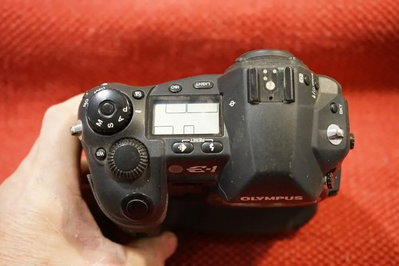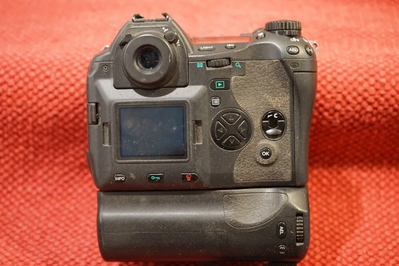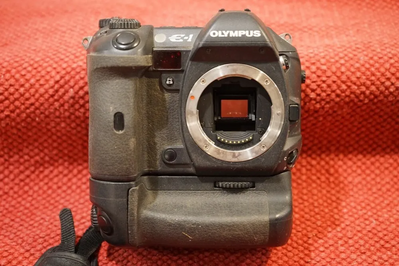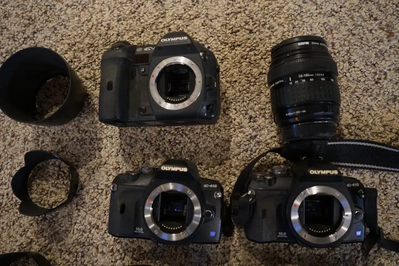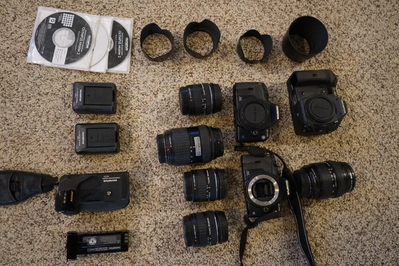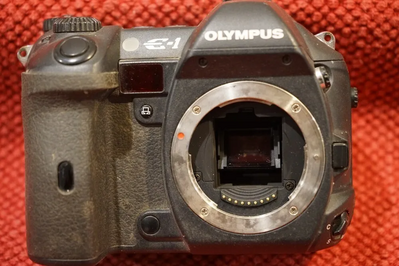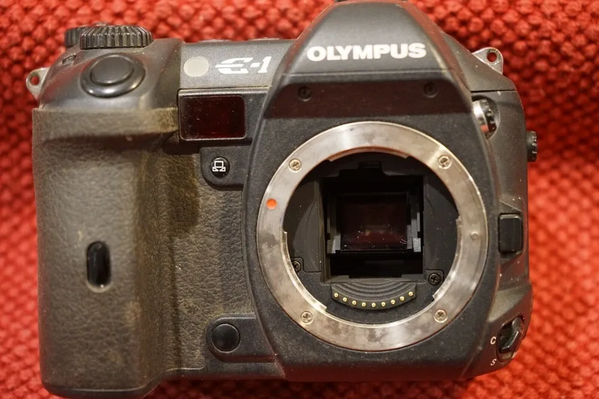
Olympus E-1
| Brand | Olympus 2003 |
| Model | E-1 |
| Released Year | 2003 |
| Type | DSLR Cameras |
| Series | E series |
| Color | Black |
| Status | Discontinued |
Quick view
Overview
The Olympus E-1 is a digital single-lens reflex camera introduced in 2003, featuring a Four Thirds System sensor tailored for interchangeable lenses. It utilizes a 5-megapixel CCD sensor delivering high-resolution images with substantial color accuracy. The camera incorporates a built-in flash and a robust magnesium alloy body aimed at professional use.
Its autofocus system provides precise control with multiple focus points, complemented by a pentaprism viewfinder offering bright and clear framing. It supports USB 2.0 for file transfer and is compatible with various Four Thirds System lenses. The E-1 offers manual and semi-automatic exposure modes, catering to advanced photographers.
Specifications
| Series | E-1 |
| Type | Digital SLR |
| Maximum Resolution | 5.5 MP |
| Color | Black |
| Model | olympus e1 |
| Connectivity | USB 2.0 |
| Features | Body Only, CCD Sensor, BODY & Lenses, Plus 2 each E-410 Bodies |
| Country/Region of Manufacture | Japan |
| Battery Type | Lithium-Ion |
| Device type | Digital SLR camera |
| Sensor | 5 MP Four Thirds type CCD |
| Lens mount | Four Thirds |
| ISO range | 100 - 800 |
| Viewfinder | Optical pentaprism |
| Screen | 1.8 inch TFT LCD |
| Body material | Magnesium alloy, weather sealed |
Images
Key Advantages
The Olympus E-1's key advantages include its pioneering Four Thirds sensor, which enabled a more compact camera design while maintaining image quality. Its solid construction offers high durability and weather resistance suitable for fieldwork. The camera's precise autofocus and varied exposure settings allow flexible shooting styles. The compatibility with a range of Four Thirds lenses provides versatility. It also features in-camera noise reduction and white balance controls, enhancing image quality under various conditions.
Limitations
Despite its innovations, the E-1 has some limitations such as a relatively low resolution by modern standards (5 MP). Its buffering capability restricts continuous shooting speeds, which might affect capturing fast action. The LCD screen has limited resolution and no live view feature. Battery life is moderate compared to newer models, requiring spare batteries for extended use. Additionally, as a discontinued model, support and accessory availability can be limited. Finally, its ISO sensitivity range is narrower compared to more recent cameras.
FAQ
What type of sensor does the Olympus E-1 have?
The Olympus E-1 features a 5-megapixel 4/3-type CCD sensor developed specifically for the Four Thirds System.
Is the Olympus E-1 still supported with accessories?
Since the Olympus E-1 is discontinued, official support and availability of accessories are limited, but some third-party options may be available.
Does the Olympus E-1 have a weather-sealed body?
Yes, the E-1 has a rugged magnesium alloy body with weather sealing designed for professional use in challenging environments.
What lens mount does the Olympus E-1 use?
The Olympus E-1 uses the Four Thirds lens mount, allowing compatibility with a range of Four Thirds System lenses.
Can the Olympus E-1 shoot video?
No, the Olympus E-1 is a still image digital SLR and does not support video recording.
What are the ISO sensitivity options on the Olympus E-1?
The ISO range on the E-1 is from ISO 100 to ISO 800, adjustable in manual and semi-automatic modes.
Does the Olympus E-1 have live view on its LCD screen?
No, the Olympus E-1 does not support live view; framing is done exclusively through the optical viewfinder.
Disclaimer
The content on is provided for general informational purposes only. We do not guarantee the accuracy, completeness, or reliability of any information, specifications, or visuals presented on the site.
is not responsible for any content, images, or data uploaded or shared by users. Users are solely responsible for the content they submit.
We may include links to third-party websites for convenience. We do not endorse or take responsibility for the content or policies of any external sites.
Use of the site is at your own risk. Always verify critical information independently before making decisions based on content from this website.

